Hello people! It is How Unique Japan again.
Today, we would like to introduce you to the White Japanese radish, also known as Daikon. It is one of the most popular vegetables in Japan, and we can see it in multiple ways (on the menu). So, it is also traditional.
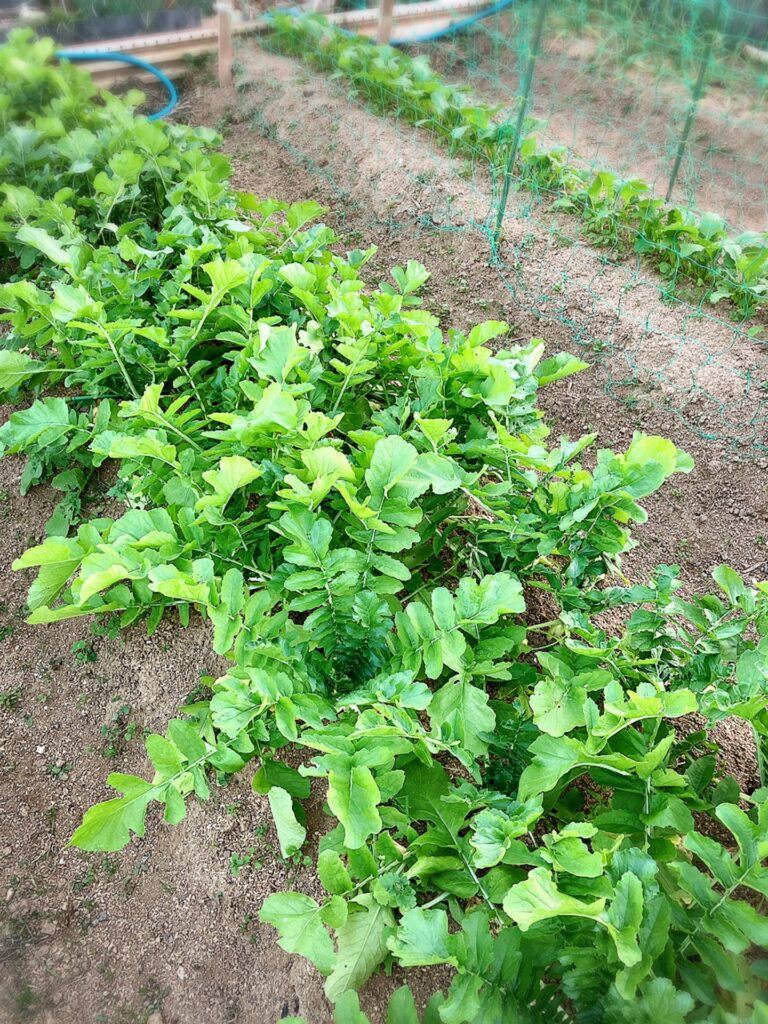
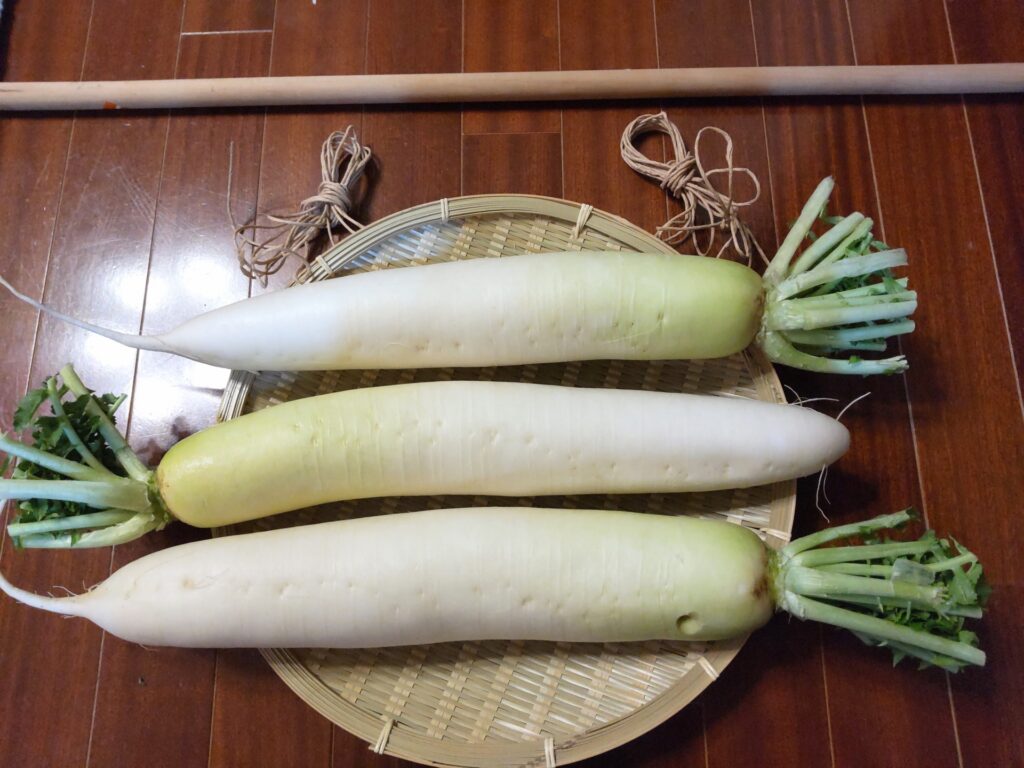
Where do we grow and keep them?
Where can we grow them in Japan? It is everywhere. (Basically, the North area is the most supplying area.)
They are tough vegetables for any serious situation, like cold weather (10 to 21 degrees) or poor soil.
Surprisingly, a coldness makes that product more tasty and sweeter. The vegetable would observe good nutrition from the soil to survive through such a cold season.
After farmers harvest, we shall be able to cook them in varied ways.
They are usually an ingredient for Miso soup and Oden soup. Grated radish can help with seasoning (basically, many Japanese eat burned fish with it and soy sauce).

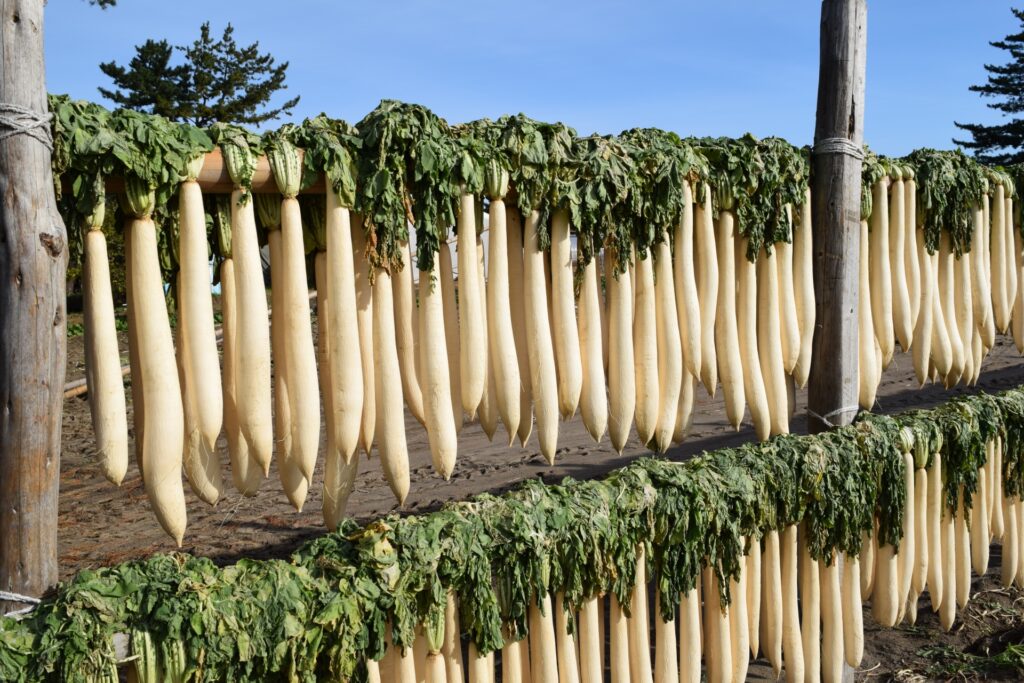
Additionally, they can be in edible condition for half a year (or a year) if they are dried under the sun until all water inside is gone.
The affection for health & menus
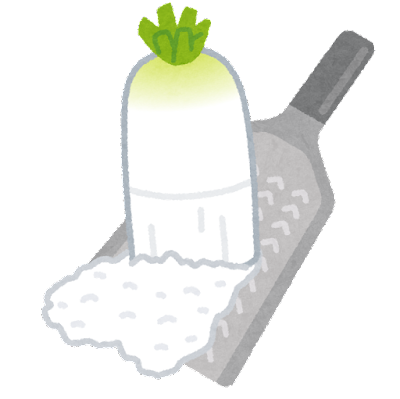
Then, what are the positive effects on our health when we eat them? First, they are healthy. Besides, they contain Diastase. It is a digestive enzyme that can break down starch and glycogen. So, they help with our stomach condition, besides hangovers.
Then, we shall see some famous “Daikon” menus in Japan. What do we have?
Kiriboshi Daikon
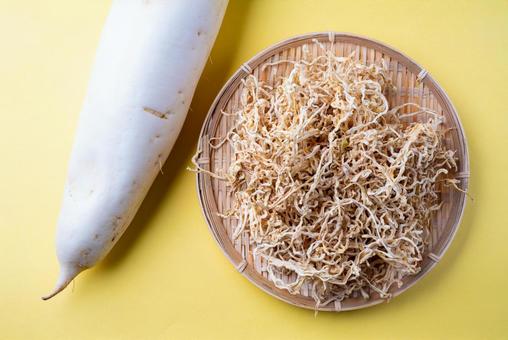
It is Kiriboshi Daikon.
It means the sliced and dried Daikon with the direct translations. As it says, we cut the Daikon into a line shape and then dry them in the sun. They will be in edible condition for half a year or longer.
The popular way to eat them is a Simmered dish, adding soy sauce or vinegar after washing with water.
Frofuki Daikon
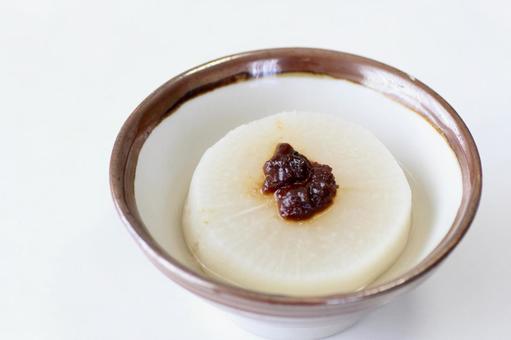
If you want to enjoy the Umami taste of Daikon, this is one recommendation. It is Furofuki Daikon. That says, Daikon after bath time.
So, it is boiled Daikon simply with Miso paste on top.
Miso soup
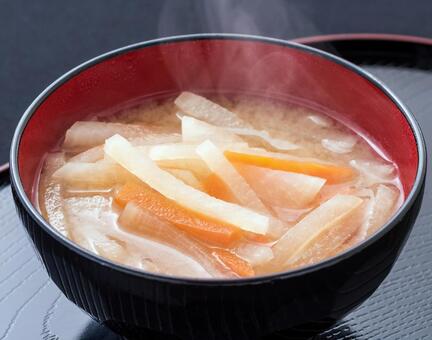
You might already know it. It is a traditional Japanese soup. The soup contains miso paste made from soybeans as one of its main ingredients.
The taste is mild and salty. The feature is that every ingredient (vegetable) could be another option for the soup. So, Daikon is a good one.
If you want to know about the Miso, please read the article about Fermented food here!
Takuan (White radish pickles)
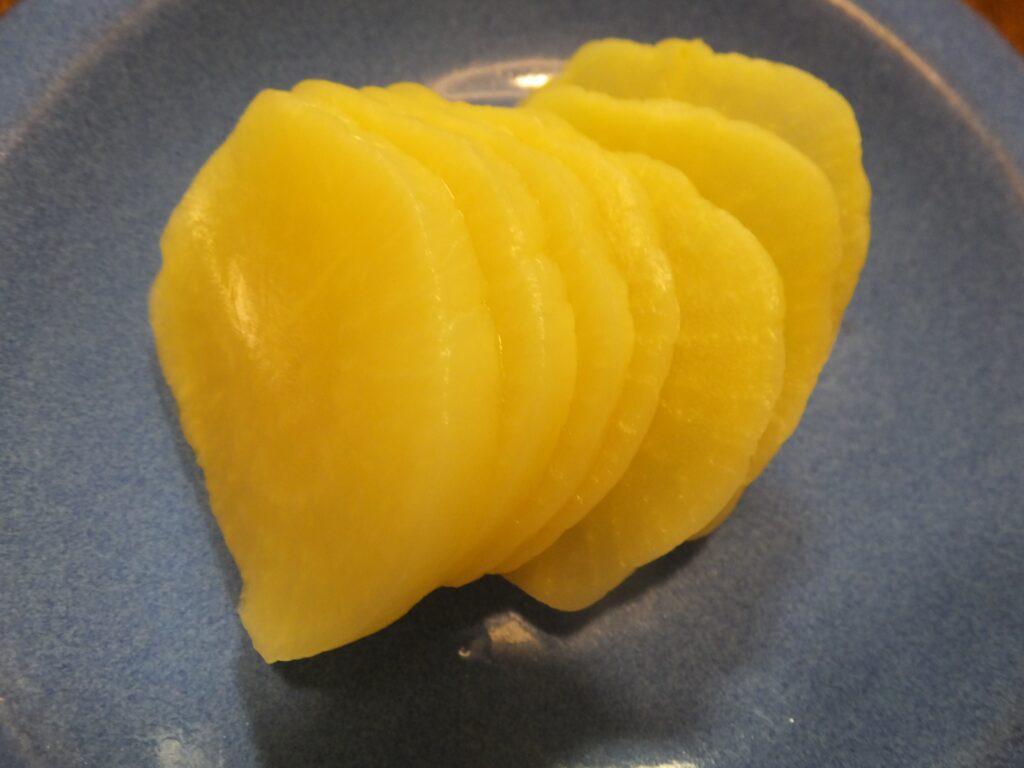
As you might know, some vegetables can be tasty pickles.
(In Japan, we say those pickles, Tukemono. If you are interested in it, click here! Japanese Pickles.)
However, the pickles from the white radish, Daikon, are inseparable from any traditional meals in Japan. So, it is always welcome with rice.
The origin story is also a feature. The inventor was a MONK of a Japanese temple from 400 YEARS AGO. He is Mr. Takuan. Indeed, he named it himself.
How do they make it? First, they (makers) cut the leaf part of the radishes. Then, hang them in the sun for two weeks to dry them.
After that, set them in the barrels with salt, sugar, and oryzae. The key to pickling well is weight. They always place a stone of the proper size on the barrel to press the radishes. It takes about two or three weeks to be ready.
One more fact. The yellow color is from a flower. It is Gardenia.
It is one of the most unique Japanese pickles, Takuan.
To close
We showed only a few examples and explanations of Daikon.
But our blog is not over yet. We have more articles about Japan, separated into four categories.
They are about Japanese lifestyle, food, the Edo era, and religions. (And they are on the front page together.)
If you want to follow, feel free to visit the pages! Thank you very much for reading this article. And see you soon!
